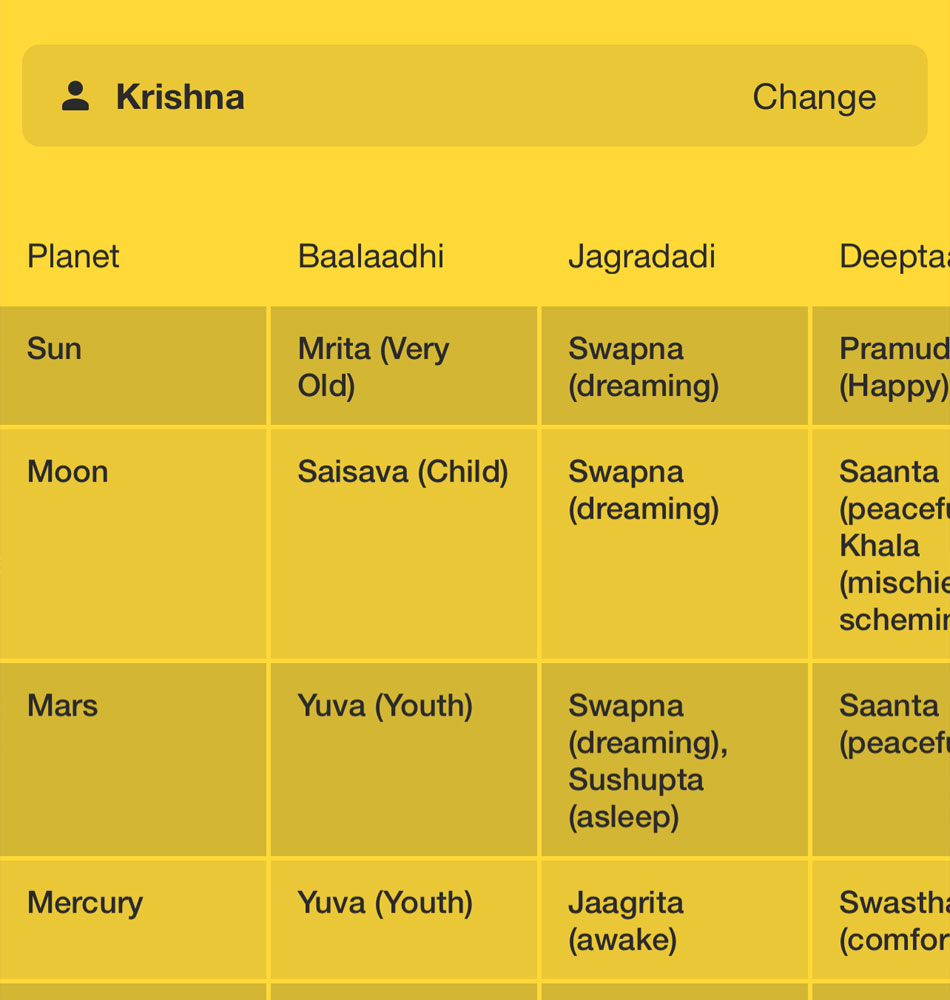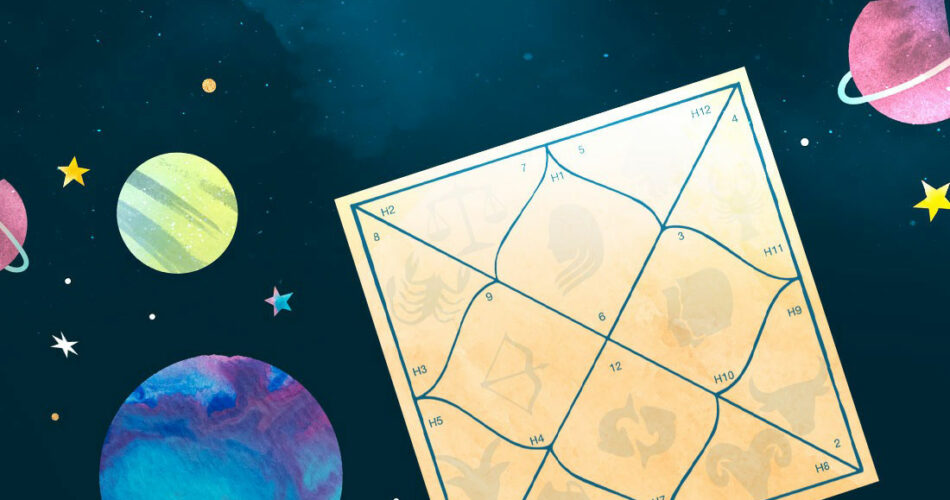The ancient text of Vedic Astrology, “Parashara Hora Shastra” by Maharishi Parashara, introduces us to a fascinating concept known as Avastha, which translates to ‘state’ in English. This technique plays a crucial role in assessing the potential of planets within a birth chart, enhancing the accuracy of predictions by complementing other astrological methods.
Avastha is a Sanskrit word that means “state,” “condition,” or “status”. Avasthas are instrumental in evaluating the strength of planets, significantly influencing their effects on an individual’s life.
The Five Stages of Avastha
The basic planetary avasthas are Bala, Kumara, Yuva, Vriddha and Mritya. There are other types of Avastha as well which we will decipher in the upcoming posts.
Avastha divides each zodiac sign into five distinct parts, each representing a different stage of life:
- 0-6 degrees (Bala): Symbolizing infancy, where a planet produces 25% of its potential results.
- 6-12 degrees (Kumara): Representing adolescence, with planets yielding 50% of their possible outcomes.
- 12-18 degrees (Yuva): Denoting young adulthood, where a planet delivers 100% of its results.
- 18-24 degrees (Vridha): Indicating old age, with a planet’s effectiveness reduced to 40-50%.
- 24-30 degrees (Mrita): Reflecting a near end-of-life stage, where a planet’s influence is minimal.
It’s important to note that these stages apply differently to odd and even signs, with the sequence reversed for even signs (Taurus, Cancer, Virgo, Scorpio, Capricorn, and Pisces).

Avasthas – Cosmic Insights App

The Cosmic Insights App calculates all the types of Avasthas present in your birth chart.
The Impact of Avasthas on Planetary Results
Avasthas not only affect the planets’ abilities to influence outcomes but also shape their psychological impact, altering their behavior and, consequently, our karma. The experience related to a planet’s karma varies according to its Avastha, with specific stages enhancing the desired results based on the planet’s inherent nature.
For example, Saturn, often depicted as an elder, thrives in Vridha Avastha, offering the most auspicious results. Conversely, Mercury, symbolized as a youthful prince, is most potent in Yuva Avastha, especially when associated with routine matters, like those governed by the 6th house in the Kaal Purusha chart.
Avasthas as a Predictive Tool in Vedic Astrology
To harness Avasthas for accurate predictions, you must consider:
- The planet’s significance and its natural state (karaka).
- The current Avastha of the planet.
- The planet’s house placement within the birth chart.
By synthesizing these elements, much like a chemical equation, you can unlock precise insights into your life. For instance, Venus’s placement in different Avasthas in the 7th house can suggest the nature of relationships a person may seek, varying from casual to serious connections. Similarly, Mars’s behavior in the 6th house can indicate a propensity for conflict based on its stage of life, from the recklessness of youth to the strategic or subdued approach of maturity.

